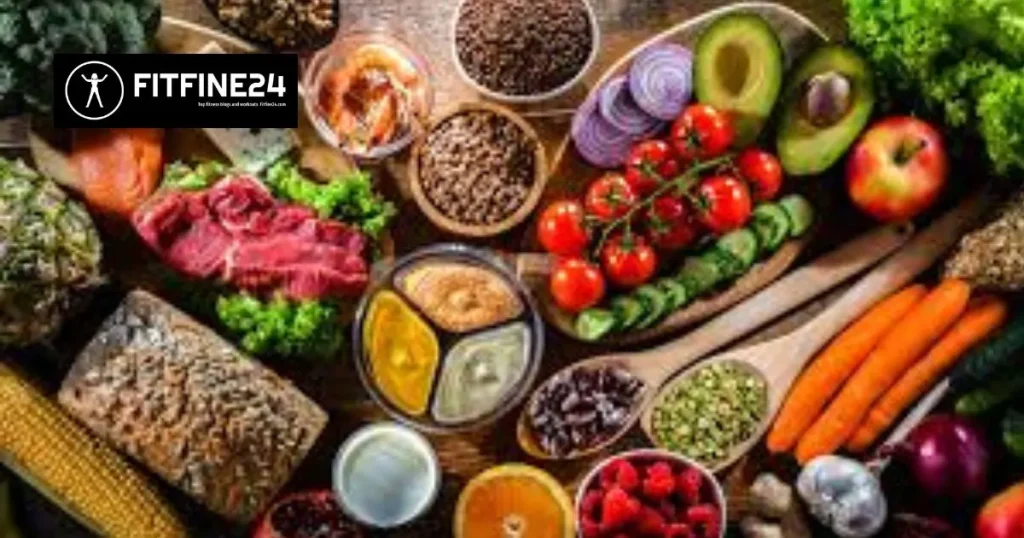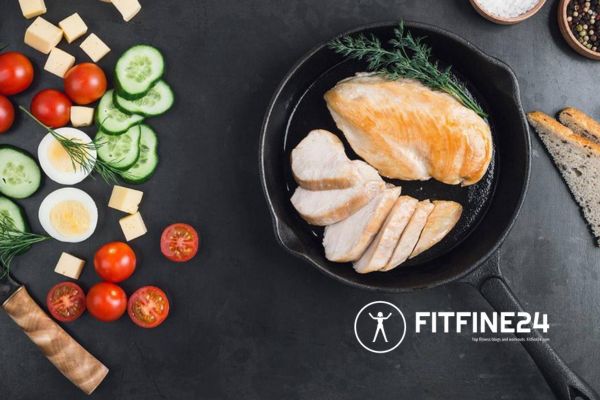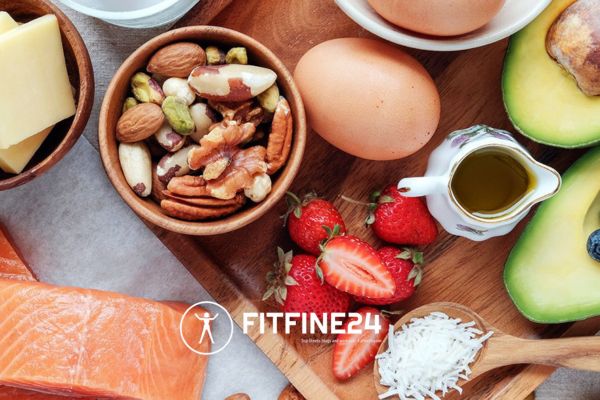
Welcome, And A Brief Introduction To The Flexitarian Diet
As fitness is becoming relevant in almost everybody’s life, people are hunting for the right diet which should be a mix of nutrients and should well-praise your workout. While you may associate veganism with having to cut back on your steak and bring the plant-based life all of the way, proven that there are no real strict rules to follow is ideal so those who do not want to give up meat completely can take advantage of some health benefits.
\The Flexitarian Diet has gained a groundswell of popularity due to these exact principles making it an excellent option for fitness gurus wanting a good balance between plant-based fare versus animal products. At fitfine24 we provide nutrition tips for better fitness results by exploring popular diets that fit multiple styles of eating with a lens to inspire activity and overall well-being; today it’s the Flexitarian.
What is the Flexitarian Diet?
The flexitarian diet is a flexible vegetarian eating plan that focuses on plant-based foods but also encourages you to eat meat and other animal produce sparingly. This type of diet allows you to eat the full range of foods while being close to the principles of vegetarianism or veganism. The Flexitarian Diet can combine the natural qualities of whole foods with reductions in highly processed meat, making it great for all aspects of health and fitness.
The Flexitarian Diet is built on the following core principles:
Following a plant-based DIET that is rich in fruits, vegetables, legumes, and 100% whole grains.
Promoting more plant-based proteins— Think tofu, beans and legumes
Eat less meat; consider avoiding red meat
Including intermittent animal-based proteins such as chicken, fish, or eggs
Minimally Processed Food Selection
Reducing intake of added sugars and unhealthy fats

The Flexitarian Diet is Perfect For Fitness
Flexitarian Diet If you are looking to consume more whole foods and plants, you still, want to get the nutrients that do come with consuming animal products. Its flexible conditions mean that you are not deprived of any type of food, which helps increase your energy levels and improve recovery following a workout — this is also helpful for long-term health goals.
Let us take a look at why the Flexitarian Diet compliments your fitness plan.
High in Nutrient-Dense Foods
Focusing on fruits, veggies, and whole grains provides the body with various vitamins, minerals, and antioxidants. These nutrients are important for muscle recovery, immune function, and general well-being – so really they are just about the most essential food you can have if you exercise!
Rich in Plant-Based Proteins
The Flexitarian Diet cuts down on meat but is more flexible with the acceptability of animal products, especially fish. All of these protein sources contribute to muscle growth and repair without the saturated fats that come with animal-based proteins.
Energy-Boosting Carbohydrates
Complex carbohydrates are found in whole grains, fruits, and vegetables and they release energy slowly throughout the day when consumed. It provides energy for your workouts and keeps you energized even during the most strenuous activities.
Supports Heart Health
Cutting back on red and processed meats, and adding more plant nutrients, are good for the cardiovascular system. This is especially crucial for those who are regularly exercising and want to keep up in terms of improving endurance, stamina, cardiovascular health, etc.
Adaptation for Sustainable Lifestyle

Another struggle many face with strict diets is that they are not sustainable. Flexitarian Diet | Best for flexibility because you can keep it up forever. It allows you to live a little and keep up with socials, dine-outs with friends, or cravings without ditching your complete fitness goals.
So what is the flexitarian diet and how does it work?
To be able to adapt to the Flexitarian Diet successfully, you should know what are the basis of their main food teams and just how they assist your nutrition as well as health and fitness. The basic components of the diet are as follows
Fruits and Vegetables
The foundation of the Flexitarian Diet is fruits and vegetables. Rich in vitamins, minerals, and antioxidants necessary for recovery and with anti-inflammatory properties to boot post-workout. For all meals, you should aim for a mix of colors on your plate.
Plant-Based Proteins
Other excellent sources of protein include beans, lentils, chickpeas, and fresh or frozen peas as well as tofu and tempeh. They help grow muscle and also have fiber to help in digestion, as well as vital nutrients for energy.
Whole Grains

Complex carbs: Quinoa, brown rice, oats, and whole wheat are all complex carbs that provide a slow and sustained energy source to help fuel your workout. Whole grains on the other hand are not as processed, and therefore they still contain many great nutrients, along with a lot of fibre that takes longer to digest – preventing you from rifling through your cupboard looking for sweets to keep you awake.
Nuts and Seeds
Nuts and seeds are very nutrient-dense with lots of healthy fats, protein, and fiber. Chia seeds, flaxseeds, almonds, and walnuts are also other omega-3 fatty acid sources — which benefit heart health and may aid in reducing exercise-induced inflammation.
Animal-Proteins Some Of The Time
You can eat small amounts of fish, eggs, and dairy; however, you will simply not have those daily, weekly, or even monthly as a vegan would on the standard vegan diet. Food that offers protein too has the potential to be of a high quality and provides omega-3 fatty acids from fish as well as calcium from dairy, which help in bone and muscle strength.
The Flexitarian Diet and Fitness
The benefits of a flexitarian lifestyle include those that apply to any good plant-based diet along with higher quality signals for health and performance success in athletic endeavors when combined with an appropriate fitness plan.
Improved Muscle Recovery
Also, plant-based proteins, as well as including lean meats or fish allow for enough protein intake for muscle repair after the gym. This can alleviate soreness and help with recovery so you’re feeling less beat up and able to hit the gym again sooner rather than later.
Reduced Inflammation
A diet rich in fruits, veggies, and omega-3 foods helps to decrease inflammation that is inevitable after a hard workout. It also helps me fix my diet to inflammation in the body and that leads to faster recovery of joints and increased overall joint health.
Enhanced Energy Levels
They were the complex carbohydrates in whole grains, fruits, legumes., The higher fiber content of it leads to a slow release of energy. This is vital in preserving endurance right through long or arduous exercise routines.
Aids in Weight Loss & Maintenance
The Flexitarian Diet can help you manage your weight by centering on whole, plant-based foods and reducing calorie-dense animal products. It is a balanced meal plan that also helps to keep the body in a calorie deficit but keeps it satisfied and full as well, for those who are aiming to lose weight.
Counting the Flexitarian Food Plan in Your Exercise Routine
The Flexitarian Diet is easy and delicious to implement into your fitness lifestyle. I hope these suggestions will help you to get started:
Take Baby Steps with Meatless Days
Start with a target of going meat-free one or two days each week. Take these days to trial plant-based proteins, lentils, beans, and tofu. Start by adding meat-free meals for a few days every week and slowly build up.
Prioritize Protein Intake
Be sure to include a protein source when you eat. This might be a legume such as lentils or tofu or a piece of fish or chicken. Sufficient protein consumption is vital for growing and rebuilding your muscles, especially post-strength training.
Eat Before and After working out
Pre-workout:Complex carbs and proteins that will give a sustained rise in energy. Try a grain and hummus sandwich or homemade quinoa, veggie, and nut mix instead. Replenishing protein and carbs pwo: Lentil salad with boiled egg or Tofu stir-fry with brown rice
Make Smart Snack Choices
Eat fruits, nuts, and seeds as a snack during the day to keep your energy levels up. A couple of almonds or a banana, for example, can be ideal to give you a bit more energy just before/just after exercising.
10 Tips to Succeed on a Flexitarian Diet in the Long-Term
Key Tips For Sticking With The Flexitarian Diet and Fitness
Be Flexible
Do not worry about the few treats or days you eat more animal products than you had intended. That’s the amazing thing about the Flexitarian Diet — it truly is for anyone who wants to eat, well “anything” and not feel bad doing so.
Focus on Whole Foods
Steering clear of processed foods in favor of whole, less-processed components would be a good idea part 1 This ensures that you get the most nutrients possible out of each meal, which will in turn help maximize your fitness efforts.
Stay Hydrated
In any diet, keeping yourself hydrated is critical. Water: Assists in digestion, circulation, and muscle contraction, while keeping you energized throughout the workout.
Incorporate Variety
Vary your meals so that you do not get bored and are well nourished. Plan to cook some different plant-based meals, take note of other grains that you need to try, and have fun tasting new food.
In conclusion:The Flexitarian Diet for a Fit You A flexible, balanced eating lifestyle proves to be practical for the active individual with diets like The Flexitarian Diet. Eat more whole foods and plant-baseonly effective for growing lean muscle but also practical and something you can stick to long term to reach your healthiest self.
A flexible, balanced eating lifestyle proves to be practical for the active individual with diets like The Flexitarian Diet. Eat more whole foods and plant-baseonly effective for growing lean muscle but also practical and something you can stick to long term to reach your healthiest self.

